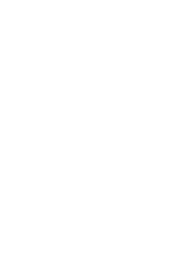 |
 |
 |

|
Birce Ozkan: Fall, 2015
Interactive Garment
|
|
 |
GRADUATION MFA DESIGN AND TECHNOLOGY
-Parsons the New School for Design
Birce Ozkan's Fall, a responsive garment that sheds its leaves when the light fades.
Birce Ozkan's Fall is her final graduation thesis project for Parsons the New school for Design. Fall is an interactive garment and that mimics nature’s responsive systems through hidden electronic mechanism. The behavior of the garment is inspired by nature’s seasonal behavior of Defoliation, the process through which trees naturally lose their leaves. The piece reacts to the simulated use of surrounding environmental factors.The objective is not only to augment a garment’s functionality but also to use its qualified technology as an instrument to create an expressive interactive piece. My thesis project was evolved around the questions What if when the temperature got hot suddenly, our clothes would start to break apart in response? What if they had the skill to behave depending on the surrounding conditions? What if garments had the ability to sense the environment just like living organisms?
|

|
Posted 28 May 2015
|
Share this:
|
|
Those questions let me find the purpose for my thesis. I purpose to create a garment that can sense the environment and behave mimicking the way trees do. Trees have the natural built in system that allow them to shed their leaves depending on the temperature and light. The garment that I am proposing is Fall, an interactive garment which is inspired by nature’s seasonal responsiveness. The wearable piece explores nature’s system dynamics to develop new techniques for a performative garment. Fall also investigates artificial actuators to sense the environment and to respond stimuli.
|
|
|
|
|
|
Parsons The New School for Design
MFA Design and Technology'15
The MFA in Design and Technology explores the social and cultural dimensions of technological change.
DESIGN PROCESS AND PROJECT-BASED LEARNING
Today's designer faces two fundamental challenges: the expanding influence of design within society and the growing role of technology within design. As a terminal degree, the two-year, 60-credit MFA in Design and Technology (MFA DT) provides students with a lively and dynamic environment in which to use design research, process, applied theory, and writing to address these challenges. Students push their experimentation beyond the visual: Design is seen as a mechanism for developing strategies, knowledge organization, business structures, and social consciousness.
GLOBALLY CONNECTED
Building on the expertise of our faculty and networks in New York and abroad, Parsons will offer MFA DT on our new Paris campus starting in fall 2014. Students enrolled in the program, whether their home campus is located in New York or in Paris, have the same curriculum and will have the opportunity to begin their studies in one city and spend a year or a semester in the other.
CROSS-DISCIPLINARY COLLABORATION AND LEADERSHIP
From Bootcamp to the final Thesis Symposium, faculty members, who are active design practitioners, encourage students to pursue forward-looking creative, commercial, research-based, educational, and art-based career paths. Areas of study include Interaction (mobile, games, Web, and installation), Physical Computing (programming code and chip-based applications such as toys, fashion, media in architecture, and performance technology), 2D and 3D Animation, Motion Graphics, and Digital Filmmaking.
Through dynamic collaborations with external partnerships, other universities, and not-for-profit organizations, students make award-winning design projects and have opportunities to exhibit at venues worldwide. As a result, MFA DT alumni are leaders in a variety of groundbreaking innovative enterprises.
Fashion is a system that brings together material resources, human capital, and artistic vision in a single garment. And that garment's cultural reception, dissemination through the marketplace, and ultimate disposal involves an equally complex chain of activity.
COMMITMENT TO NEW YORK AND GRADUATE FASHION EDUCATION
The MFA Fashion Design and Society at Parsons The New School for Design is the first graduate program of its kind in the United States. Both interdisciplinary and international in scope, this academy for advanced studies in fashion design will train a small cadre of world-class designers to have a global understanding of fashion. Innovative and progressive, Fashion Design and Society will offer students the opportunity to make substantive contributions—both professional and conceptual—to the field of fashion design.
The program was initiated with the support of Parsons alumna Donna Karan, whose own career reflects a broad view of fashion that has transformed the field.
Aiming to bridge the gap between industry and education, the MFA Fashion Design and Society program reframes fashion design education within the context of the global political economy. Students learn to consider design, production, and distribution cycles as well as social, critical, and ecological dimensions of fashion in self-directed projects supported by the fashion industry.
INTERDISCIPLINARY RESEARCH
The program combines intensive studio-based projects with design research. Areas of research include sustainability, globalism, media studies, social sciences, and management. Its interdisciplinary approach broadens students' understanding of fashion in context. Its emphasis on new technologies in fabrics and construction enables students to develop into outstanding designers and leaders in the field.
Supplementary classes in filmmaking, presentation, and photography expand students' visual design language and communication skills. This coursework also prepares them for the collaborative environments typical of professional workplaces.
Students also have access to the catalog of studies at The New School, a leading university in New York City.
The New School
66 West 12th Street
New York, NY 10011
http://www.newschool.edu/parsons/mfa-design-technology/
|
|
|
|
|
|
|


